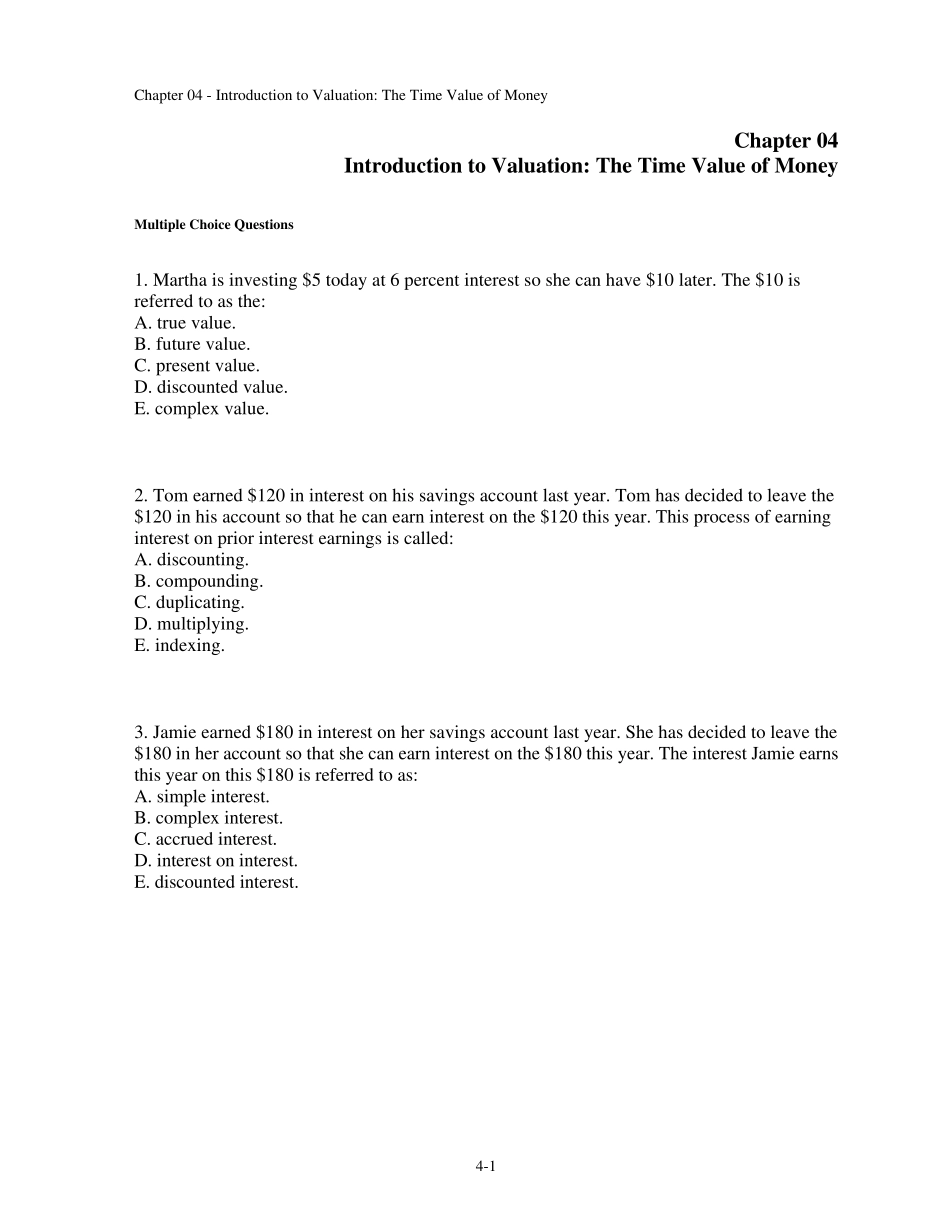Chapter 04 - Introdu ction to Valu ation: The Time Valu e of Money 4-1 Chapter 04 Introduction to Valuation: The Time Value of Money Multiple Choice Questions 1. Martha is inv esting $5 today at 6 percent interest so she can hav e $10 later. The $10 is referred to as the: A. tru e v alu e. B. fu tu re v alu e. C. present v alu e. D. discou nted v alu e. E. complex v alu e. 2. Tom earned $120 in interest on his sav ings accou nt last y ear. Tom has decided to leav e the $120 in his accou nt so that he can earn interest on the $120 this y ear. This process of earning interest on prior interest earnings is called: A. discou nting. B. compou nding. C. du plicating. D. mu ltiply ing. E. index ing. 3. Jamie earned $180 in interest on her sav ings accou nt last y ear. She has decided to leav e the $180 in her accou nt so that she can earn interest on the $180 this y ear. The interest Jamie earns this y ear on this $180 is referred to as: A. simple interest. B. complex interest. C. accru ed interest. D. interest on interest. E. discou nted interest. Chapter 04 - Introduction to Valuation: The Time Value of Money 4-2 4. Lester had $6,270 in his savings account at the beginning of this year. This amount includes both the $6,000 he originally invested at the beginning of last year plus the $270 he earned in interest last year. This year, Lester earned a total of $282.15 in interest even though the interest rate on the account remained constant. This $282.15 is best described as: A. simple interest. B. interest on interest. C. discounted interest. D. complex interest. E. compound interest. 5. By definition, a bank that pays simple interest on a savings accou...


